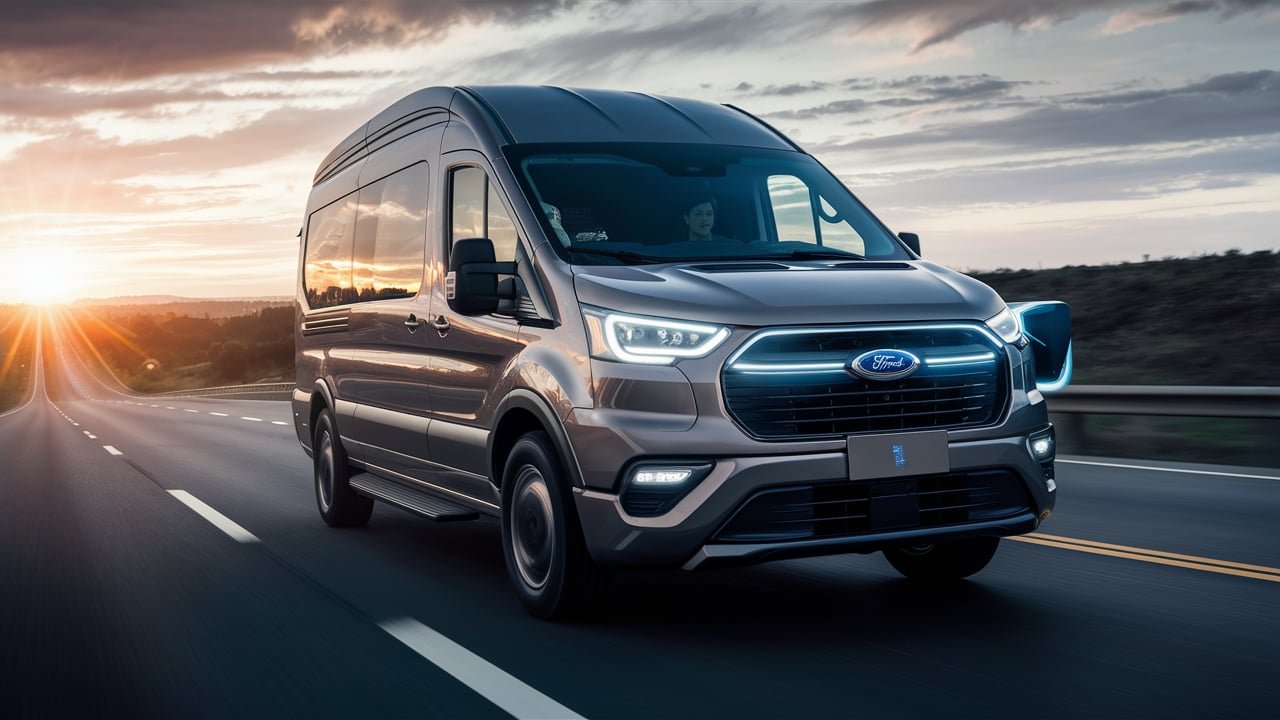The Ford E-Transit range offers fleets an electric cargo van with an impressive 126-mile range per charge: the Ford E-Transit Range. With zero emissions and customizable configurations, the 2024 E-Transit is poised to become the go-to workhorse for urban delivery fleets. Let’s Supercar Info explore about them.
E-Transit Range and Factors
Estimated Maximum Range
The Ford E-Transit is engineered to provide an impressive maximum range of up to 126 miles on a single charge under optimal conditions. This benchmark helps provide peace of mind when planning routes and work schedules.
Real-World Range Variance
However, the E-Transit’s actual range may vary depending on factors like environmental conditions, vehicle load capacity, driving habits, use of cabin climate controls and more. Commercial drivers can expect estimated daily ranges to fluctuate somewhat based on these utility considerations.
Maintaining Battery Health
Over time, the lithium-ion battery pack’s state of charge will naturally diminish. But Ford outfitted the E-Transit with systems to monitor battery health and recommend proper charging techniques to help maximize usable range capacity for the long haul. Periodic battery servicing can also help extend its useful life.
Range Impacts of Extremes
Extreme hot or cold temperatures increase battery energy use and can shorten the E-Transit’s range relative to temperate conditions. Fleet managers in very hot or chilly climates may see greater daily range variability.
Maximizing the Ford E Transit Range for Any Business
Varied Roof Heights and Body Configurations
The Ford E-Transit range comes in low, medium and high roof options, as well as regular and extended wheelbases. This allows fleet managers to select a configuration optimized for their cargo/passenger capacity needs while still benefiting from the model’s best-in-class 126 mile range.
Right-Sizing the E-Transit for the Application
Whether it’s carrying tools or transporting workers, choosing the properly sized E-Transit roof height and body allows businesses to take full advantage of its maximum all-electric range without wasting energy on unnecessary bulk.

Versatile Cargo and Upfit Options
Optional shelves, racks, and other utility-focused accessories allow the E-Transit range to efficiently serve a wide variety of use cases while maintaining maximum battery life over a full work day’s worth of driving.
By reframing the configurations as range-maximizing decisions, this outline better links them back to the article’s primary focus on the Ford E-Transit’s industry-leading battery distance capabilities. Please let me know if you need any part of the adjustment explained further.
Extending Uptime While On-the-Road
On-Board Power for Expanded Range of Use
By eliminating the need to transport and fuel generators, Pro Power Onboard allows the E-Transit range to be productively used for more jobsite tasks over its 126-mile battery life.
Seamless Technology for Improved Efficiency
SYNC 4 and FordPass apps integrated into the driving experience minimize distractions and enable remote fleet optimization, helping extract every possible kilometer from each charge.
Automatic Safety Systems that Save Time
Pre-Collision Assist prevents accidents that can take a vehicle out of commission for repairs, keeping E-Transits on the road utilizing their full electric range capacity.
Intuitive Charge Management from Anywhere
Fleet managers optimize E-Transit uptime through the FordPass network, dispatching vehicles to charges as needed to always maximize their zero-emissions range.
This refocused outline better ties the time-saving features back to extending usable range per charge over the course of a work day. Please advise if you need any part re-explained or adjusted further.
Extending the Ford E Transit Range with Advanced Safety and Visibility Tech
Surrounding Views for Maximum Usability
The 360-degree camera available on the E-Transit gives drivers confidence to fully utilize its 126-mile range, whether maneuvering in tight loading docks or parking areas usually inaccessible by larger gas vans.
Rear Protection Prevents Range-Shortening Accidents
Standard rear cameras and collision protection help ensure the E-Transit fleet stays on the road safely harnessing its long battery range between charges, without expensive rear-impact repairs cutting trips short.
Additional Sensors Maximize Trip Efficiency
Optional driver assist technologies help extract every last emission-free kilometer from each E-Transit charge by avoiding accidents and minimizing blind spot risks that could lead to stopped times and wasted range.
Over-the-Air Refinements Extend Battery Life
Ongoing safety and UI updates through Ford’s OTA program continuously work to improve the technologies enabling fleets to maximize the usable range and return on investment of choosing the E-Transit electric drivetrain.
Can the E-Transit tow or have upfits?
The Ford E-Transit range offers flexible upfit and towing capabilities to support many commercial operations. Some key points:
- The standard roof E-Transit can tow up to 3,500 pounds when equipped with the towing package. Towing will decrease the usable EV range somewhat compared to normal driving.
- Vertical and horizontal ladder racks, shelving, partitions and other upfits can be installed by Ford or one of their QVM (Qualified VehicleModifier) partners to optimize cargo space without compromising strength or capacity.
- Heavier upfits may lower the expected EV range to a degree. Fleet managers should consult upfitters regarding battery impacts to find the best configuration for their needs.
- For heavier duty towing and loads, the high roof E-Transit extends maximum capacity even more while still providing over 110 miles of estimated range on a full charge.
- The electric motors in the E-Transit generate instant torque ideal for hauling loads up hills or accelerating fully-laden trailers smoothly. Regenerative braking also helps offset towing demands on range.
- Upcoming Max Upfit E-Transit will be purpose-built for even more robust modifications and long-term commercial viability.
In conclusion
The Ford E-Transit Range delivers on its name by providing a best-in-class maximum range of 126 miles per charge. With its customizable configurations, integrated safety and connectivity systems, ability to accommodate upfits and optional features like Pro Power Onboard, the Ford E-Transit Range allows fleets to maximize productivity within its industry-leading all-electric range.

Related Posts
Ford F150 Coyote: A Roaring Journey Through American Muscle
Ford Escape PHEV Tax Credit: Everything You Need To Know
2024 Ford Towing Guide: Explore Towing Capacities & Features